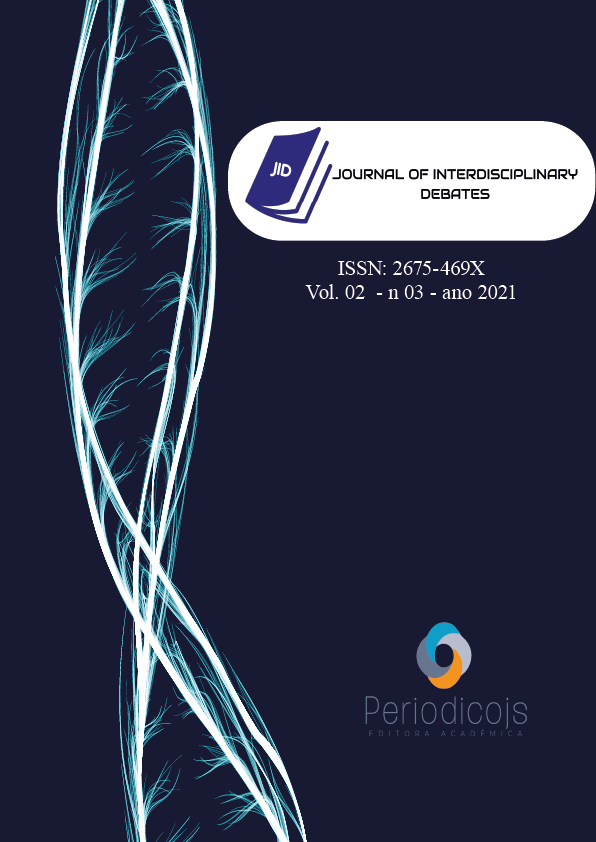Resumo
INTRODUCTION: The Biomedical Scientist is prepared for the exercise of numerous activities related to the area, today there are 35 qualifications duly established and regulated by the Federal Council of Biomedicine (CFB) ensuring this performance. Since then the course has expanded and broken national boundaries, so there is also the course in Bahia, especially in the extreme Baiano. MATERIALS AND METHODS: This is a study of perception, carried out with field research with the use of data survey through questionnaires applied to undergraduate students in the year before the SARS-Cov-2 Pandemic. RESULTS AND DISCUSSION: The answers of 63 students were evaluated, and separated according to each question, 33% of the students have the knowledge that for the profession there is still no defined wage cap, needing more regulations with the CFB, 86% of the students did not know that they can act in the Strategy and Health of the Family (ESF), in the vaccination area and acupuncture, at the time to the research 64% of the sample did not exercise paid activity, what facilitates the non-obligatory internship that according to the questioned ones should begin in the 3rd semester. CONCLUSION: Thus, through the study of the students' knowledge of the course, it is clear that health care becomes more complex and the biomedicine student should be trained in a broader way, having contact with discussions in other areas.
Referências
ASSOCIAÇÃO Brasileira de Biomedicina- História da biomedicina 2017. Disponível em: http://www.abbm.org.br.
BARBALHO, Sérgio- Livro institucional CRBM, Biomedicina - Um painel sobre o
BORGES, Helen presidente da - Convenção Coletiva De Trabalho 2015/2016. Disponível em: http://www3.mte.gov.br/sistemas/mediador/.
BRASIL; Sindicato dos Biomédicos Profissionais do Estado de São Paulo Resolução CFBm nº 78, de 29 de abril de 2002. Disponível em :< http://www.sinbiesp biomedicina.com.br>.
CONSELHO Regional de Biomedicina da 4ª Região – Histórico da biomedicina ano, 2007.
Dr. CAPARBO, Marcos – Direitos e responsabilidades do biomédico Jornal da imagem. São Paulo, agosto de 2012.
LEMOS, Cristiane Lopes Simão; LELES, NUNES Renan; OLIVEIRA Ellen Synthia Fernandes de ;CARDOSO, Clever Gomes Cardoso. Reflexões sobre as Diretrizes do Curso de Graduação de Biomedicina no Brasil: desafios e potencialidades. Investigação Qualitativa em Educação// Investigación Cualitativa en Educación //Volume 1, 2016.pág.: 882.
MURR, Murilo Camano - A falta de informação e a consequente desunião de uma classe, Sindicato dos Biomédicos Profissionais do Estado de São Paulo, 20
NAOUM, Paulo Cesar- Biomedicina: Orientações acadêmicas e profissionais para estudantes e graduados em cursos de Biomedicina. São José do Rio Preto: Edição da Academia de Ciência e Tecnologia, 2005.
ROSE, Nikolas London – A biomedicina transformará a sociedade? O impacto político, econômico, social e pessoal dos avanços médicos no século XX. Tradução de Emerson Rodrigo Pinheiro Martins Universidade do Estado do Rio de Janeiro, Rio de Janeiro, Brasil 2010.
SANTOS, A. N.; Mendes, A. N. dos A.; Gonçalves, B. F. da S.; Brito D. M. de; Pedro, E. M.; Ramos, P. C. dos S.; Souza- Lemos C.- Estágio supervisionado para acadêmicos de biomedicina. Revista Eletrônica Novo Enfoque, ano 2010, v. 11, n. 11, p. 51 – 60.
SALES, Ana Isabela Lopes. Simpósio de Biomedicina proporciona mais conhecimento para alunos, 2015. Disponível em: https://unp.br.
SANTOS, Leila Santana dos; FERREIRA Camila; SAMPAIO, Maria Carolina - Ética e Bioética na formação profissional na área da Biomedicina Faculdade Centro Universitário das Faculdades Metropolitanas Unida, 2014.
SILVA, Kelly de Oliveira Galvão; MARQUES, Alessandra – Breve histórico da graduação em biomedicina no Brasil e a existência de disciplinas que a aproxime do SUS nas matrizes curriculares do curso em Goiânia-GO. Rev Cien Escol Estad Saud Publ Cândido Santiago-RESAP. 2015; 1(2): 136-146 ISSN: 2447-3406 136.
SOUZA, Elza Maria de Souza; GRUNDY, Emily - Promoção da saúde, epidemiologia social e capital social: inter-relações e perspectivas para a saúde pública Cad. Saúde Pública, Rio de Janeiro, 20(5): 1354-1360 set-out, 2004





